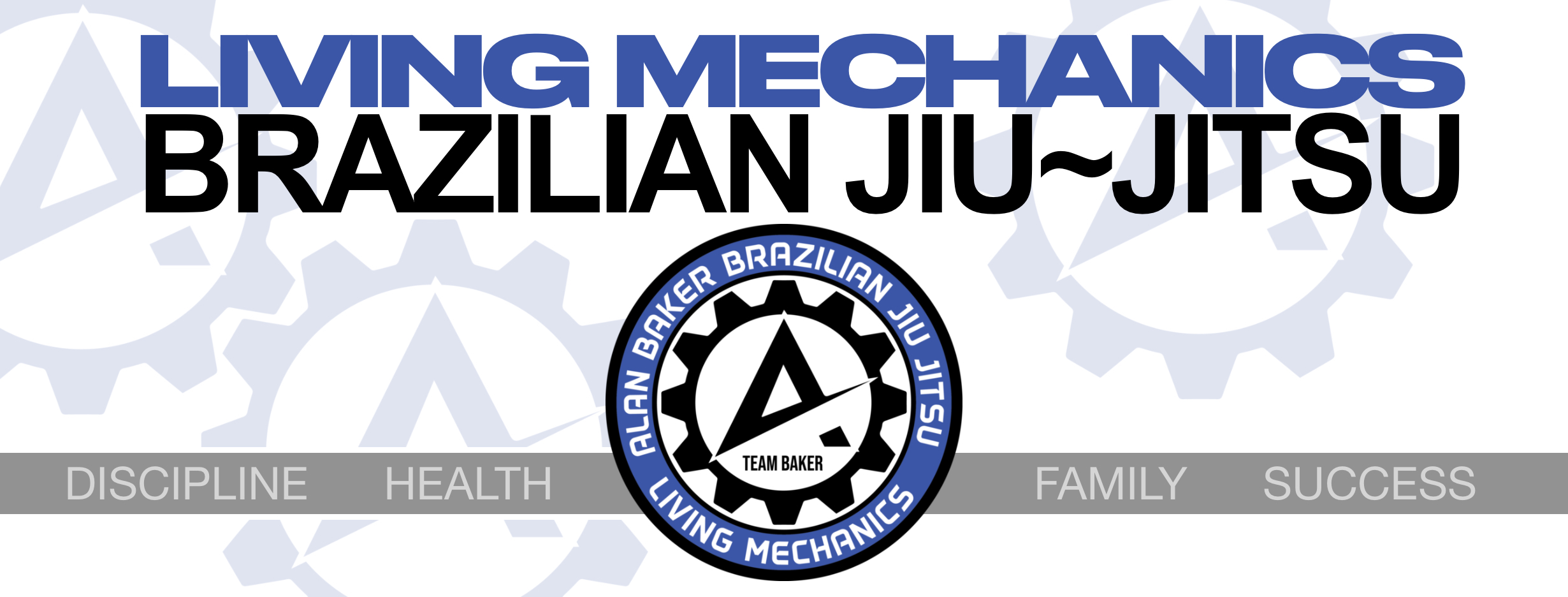Alan Baker Brazilian Jiu-Jitsu
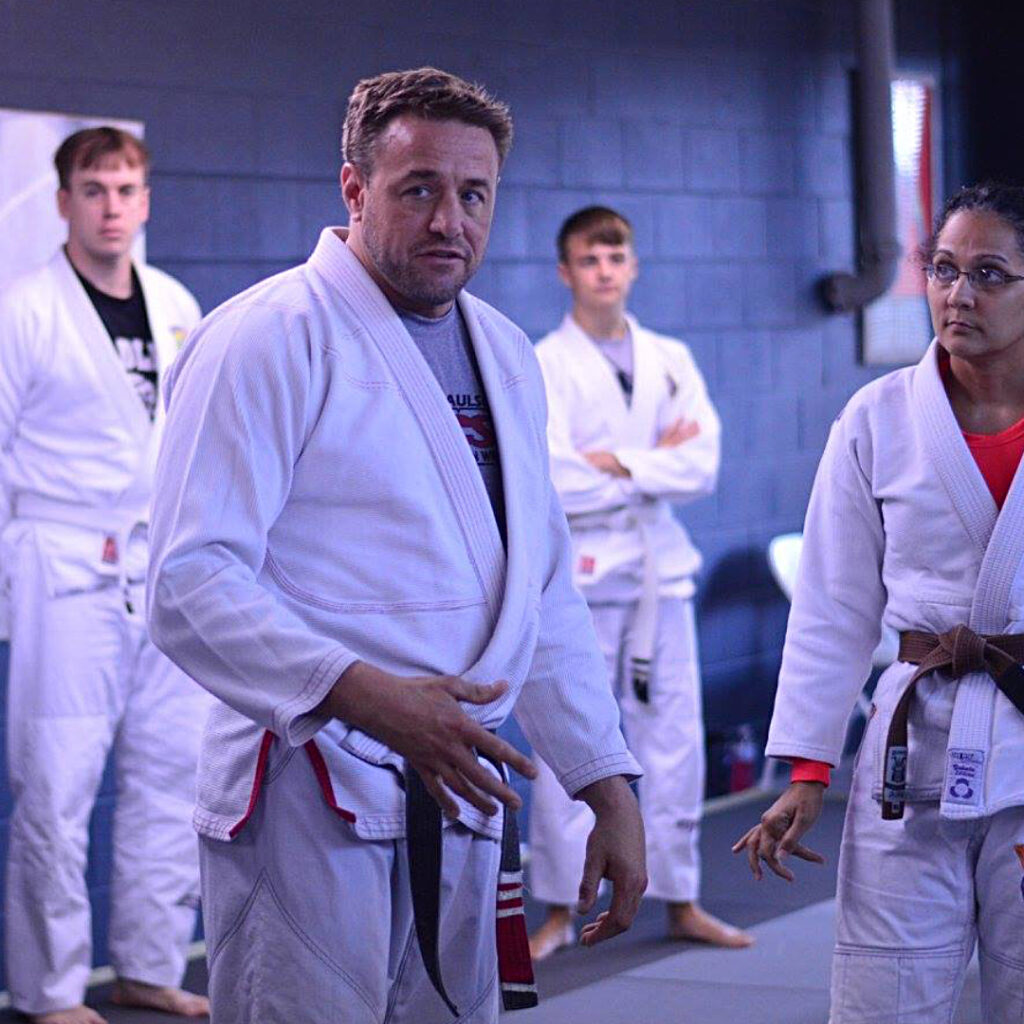
Professor has always focused on the self-defense approach in everything he does. After over 40 years of studying and training in multiple grappling, ground fighting, and pummeling arts, Professor Alan has developed his unique approach to teaching grappling & Jiu-Jitsu. His background in teaching and training with personal protection agents, law enforcement groups, and military units combined influenced his distinctive approach. Additionally, he integrated his experience in several other forms of martial arts and their unique approach to teaching body alignment, placement, and mechanical advantage. Integrating all these elements necessitated a shift in training approach, particularly when incorporating a firearm into the grappling environment. Training with your EDC alters everything, right down to your basic techniques. This added layer of information and mindset led to the curriculum being dubbed “living mechanics,” ultimately becoming its namesake.
Two Educational Paths
The LM program has two halves. The most recognized is the Jiu-Jitsu curriculum. The second half is the application of actual fighting or self-offense/defense. In the second portion, we consider having to apply our training in a parking lot or on a sidewalk while armed. Considering weapons and different environments forces us to view the conflict in different terms and forces us to have distinct goals.
Each section can be studied individually, but they are designed to complement each other if the student decides to engage in both areas. This unique approach, which is not the typical sport-based process, brings together the two areas of study-Jiu-Jitsu and self-defense. It is this distinctive combination that makes our program stand out and piques the interest of potential students.
A longstanding tradition of grappling
In the context of grappling, Pummeling and ground fighting, Professor Alan is a 4th-degree Gracie Jiu-Jitsu Black Belt under Master Pedro Sauer. He also holds a Representative Coach ranking in Combat Submission Wrestling under Master Erik Paulson and a 2nd-degree Black Belt under 8th-degree Master Bob Byrd. Additionally, over his 44 years of training and teaching, he has focused on grappling and ground fighting for the last 30+ years. Professor Alan has extensively studied Catch Wrestling, Shooto (Shoot Wrestling), Greco-Roman wrestling, Chinese Shuai jiao, Chinese Chin Na, and Chinese Ground Fighting: “Dog Boxing.” and Majapahit Martial Arts – Silat.
Training Sections
- Mechanics – This is a detailed study of leverage, position, and the attainment of proper skeletal alignment to interact with your opponent based on intelligent mechanics and alignment instead of relying on strength. These mechanics lay the foundation of intelligent placement and utilization of bone structure to deal with pressure from a superior opponent. These concepts are generally learned by default in most educational environments. They are not directly studied or focused on by the students. Due to this, not everyone develops a solid understanding of the information. This delay in learning can cause the student to spend unnecessary time and energy focused on the wrong areas. Our goal with this parallel curriculum is to help the student achieve this knowledge quicker so that they may learn sooner to deal with aggressive energy and larger, stronger opponents. In the section, we also introduced the study of proper breathing. Proper breath combined with good alignment and skeletal placement, the student can learn to be comfortable in a defensive position, allowing them to escape and move into a more dominant position.
- Curriculum – this is the fundamental technique of the program. Techniques are the primary focus of most jiu-jitsu programs. In Living Mechanics, it is just the beginning of the educational methodology used by Professor Alan. The curriculum is influenced by Professor’s experience in multiple different grappling systems and by his various grappling instructors over the last 40+ years.
- Flow drills – These drills teach the student to move intelligently from position to position. Flow drills will also introduce the student to moving from position to position and flow from submission to submission. These drills start basic for the beginning student and then grow more advanced in movement and timing as the student grows through the system. Movement is life! And quite often, the ability to move takes considerable time for the student to learn. The goal of the section is to give the students progressive drills that grow over time and coincide with the level of skill of the student. This educational process allows them to learn the art of movement while grappling sooner, so they can apply it quicker in their learning career. It also ensures that there will be a continuous progression in their ability to use movement as they advance through their grappling career.
- Philosophy – Understanding what you’re trying to do and what your goal is as you train is very important. Each level, from basic up to advanced (White belt to Black belt), has a specific training methodology in philosophy that is followed to ensure a proper mindset and keep the student focused and on track for their overall goals of obtaining proficiency.
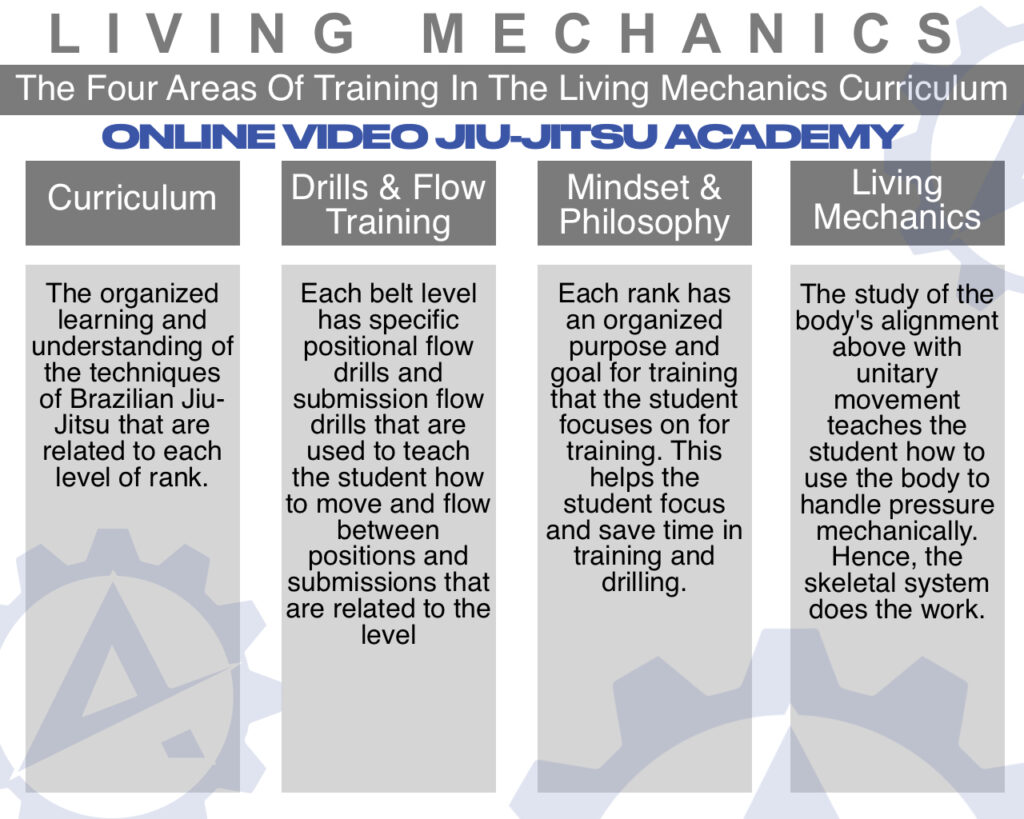
Self Defense Perspective
Generally, there are two schools of thought in Jiu-Jitsu. You can look at it from the sports point of view, or you can look at it from the self-defense point of view. Living Mechanics Jiu-Jitsu was designed for self-defense. Though it can be used in a sports setting, its primary focus is to prepare an individual to defend himself in a street-based situation. I mention this because keeping the correct set of glasses on is essential as you train your Jiu-Jitsu. Some techniques are just designed to work in a sport-based environment and will not work on the street when the possibility of strikes from your opponents is likely. Both types of training are essential, but if your goal is to prepare yourself for a real-world scenario, it is essential to keep this mindset with you as you train and move forward on your journey.
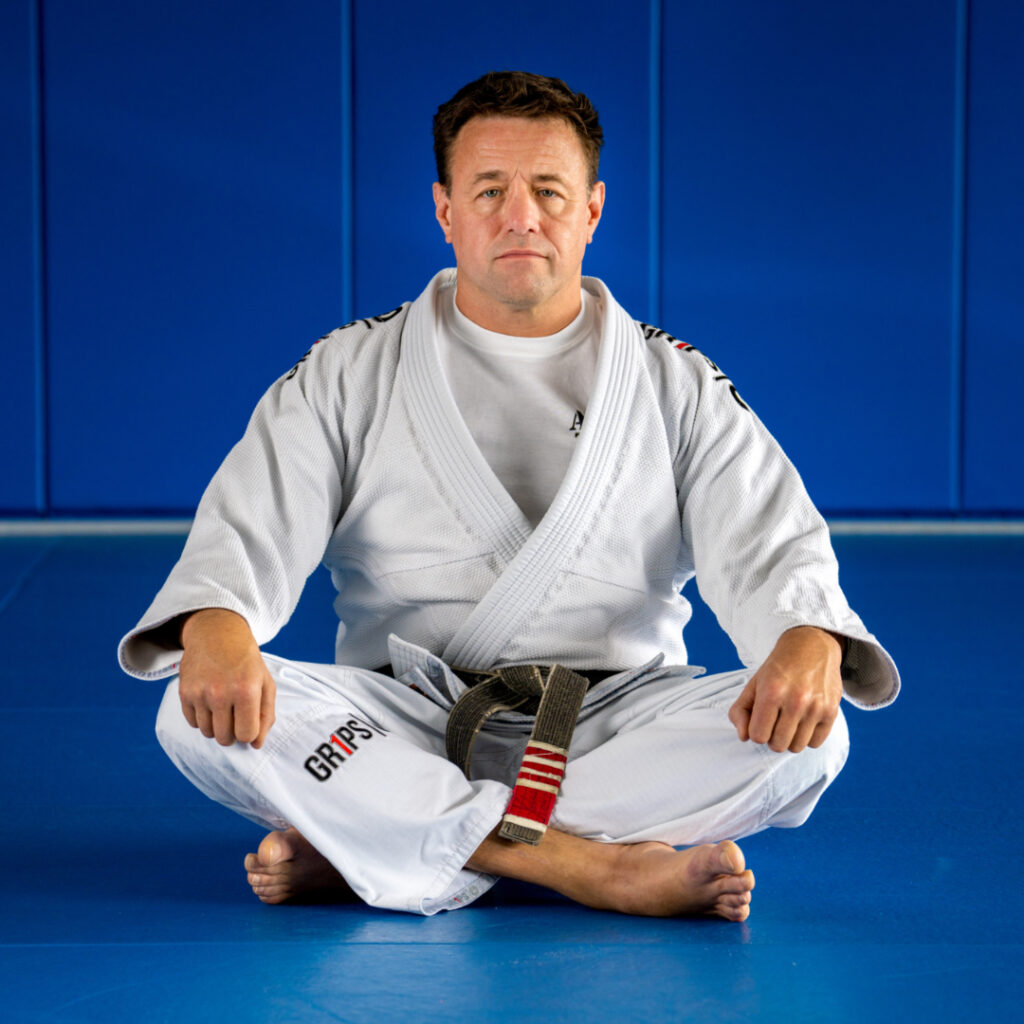
Done Correctly the martial arts will give you a life time of fitness, it’s methods cannot be matched by any other system of physical fitness & physical development
~ Professor Alan Baker
Living Mechanics Jiu-Jitsu Basic Principles List
- Primary mechanics – secondary mechanics – tertiary mechanics
- The difference between a push and a post
- Long Post – Mid Post – Short Post
- Skeletal alignment
- Unitary motion
- The leaver
- Bridge Arm Principle
- Spinal Expansion
- The Full Cycle Breath
- The Time Principle
- Earn Flat Principle
- Disrupt the opponents base principle “the dead lift”

Discipline
We believe in discipline and self-control because they are the foundation for creating change and growth in life and any endeavor you commit yourself to.
Health
We believe in the pursuit and development of the pillars of good health. We pursue positive growth in our physical, emotional, social, spiritual, and intellectual health.
Family
We believe in growing strong positive relationships with our families and our team. The people you surround yourself with strongly influence who you become and where you are going.
Success
Belief has always preceded success, and disbelief has always preceded failure. We believe in the pursuit of success in training and life. We lay the plans and take steps to acquire our goals.
Living Mechanics Jiu-Jitsu Training Principles List
- Specificity Principle
The methods we choose to train students must correspond to the individual’s goals.
- Adaptivity Principle
Students must adapt to the applied methods as they are educated and trained in the system.
- Overload Principle
The methods used to train a student must be sufficient to create more stress than the individual can handle to initiate growth and change.
- Progressivity Principle
The methods used to train a student must observe a progression. For the student to accomplish greater success, the techniques and training methods must increase in an orderly, incremental fashion.
- Individuality Principle
The unique needs of the individual or individual situation must be considered.
Our Etiquette & Process To Begin Randori (free practice) “Live Rolling.”
- Show respect (Shooto Bow, “The Wai” Bowing) The Way is Muay Thai Greeting & Sign of Respect (Thai)“Sawadee Khap” / “Sawadee Kha” For the Ladies ~ (Japanese) “Doumo arigatou”
- Check each other’s injuries past and present. (avoid current injuries & avoid bringing past injuries into the present)
- Set a training percentage (the senior is responsible for maintaining the percentage of aggression)
- Shake hands, fist bump, or high five & Begin your training.
- Finish with respect – shake hands and say thank you to your partner!

Living Mechanics Jiu-Jitsu Curriculum – Training Cycles
When you reach a new training topic, each of us will spend a certain amount of time in three different cycles while training this topic.
Each cycle can be determined by the instructors or the instructor that is teaching the material. For instance, the first cycle could be anywhere from a week to three weeks long. The length of a cycle will just be determined by the amount of information and of course, the experience of the student body that is in the class.
Cycle One Drill Focused
During cycle one, the classes will be heavily focused on drilling and training movement and position. If the topic is a submission series, we will demonstrate chain submissions and drill methods that will connect the different submissions smoothly.
Although the classes will be focused heavily on drilling and movement during cycle one, I would like to see at least one technique taught in each class during the cycle. This is to ensure that, at the very least, we will be covering some of the fundamental topics during this period. Most likely, these topics will be the primary fundamentals related to the study area.
Cycle One Technique Focused
Cycle two is going to be more technique focused. These classes will go through the list of techniques or information that will be related to the topic we are studying. Our goal during this time is to help the student remember the information and connect it together in a series so it will be remembered easily.
Even though the cycle is heavily focused on technique, we should still be doing some basic grilling during the warm-up and, of course, some time focused on grappling or pummeling at the end of the class as usual.
Cycle One Training Focused
The third cycle of this teaching rotation will be heavily focused on training. We will be putting together a various list of methods and different varieties of rolling and pummeling that you can present to the students. They can follow the instructions and train the information that will be given by the instructor. But also if they want, and they are advanced level students, they could grab a partner and just go off to the side and put in some pressure testing themselves. The main thing during cycle three is that we are being heavily focused on training and development of application while under the pressure of resistance of a partner.
Student Rolling Procedures
Training in an active environment is essential for developing timing, body placement, and applying what the student is learning. With that said, it is one of the most misunderstood training areas. It is essential to understand that you must develop a volume knob for the level of aggression you use in class with students that may not be to the level to withstand higher levels of force and aggression. Sometimes learning this philosophy takes time, so if you are reminded of this by a senior or a coach, accept the feedback respectfully and then make adjustments to your training piece. We are a team and here to help each other prepare for what could happen on the street.
Living Mechanics Jiu-Jitsu Training Philosophy
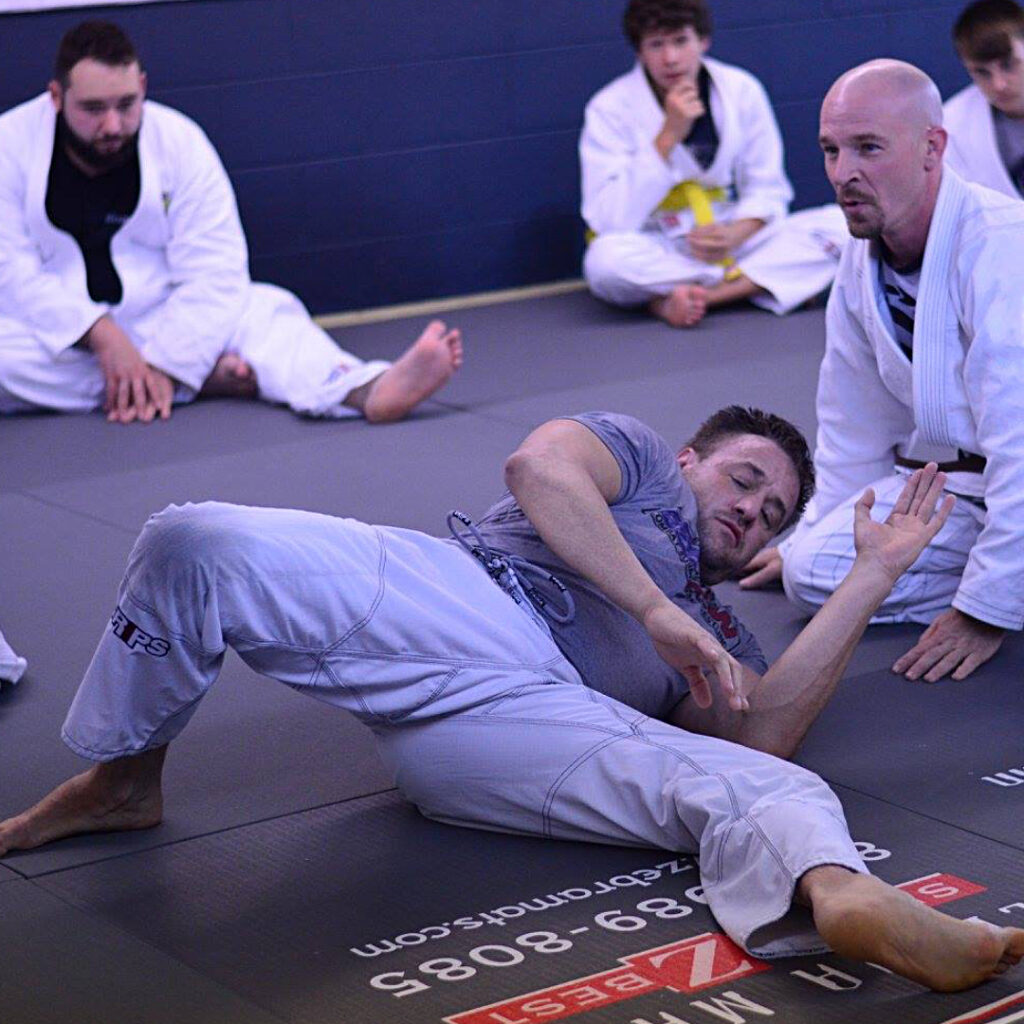
White To Blue
Practitioner of Defense
The white belt student’s preliminary study is that of mastering Defence. It’s not that they won’t learn to do escapes and submissions while on this journey, but primarily their underlying goal is the development of a powerful Defence.
This defense should be developed on a deep-rooted understanding of the alignment of the skeletal system and the ability to move the body as a single unit unitarily. Additionally, there should be a good depth of knowledge of the many leavers of the human body.
As the student progresses through this skill development, they should become very comfortable in a defensive position. They may not be escaping from a higher-level practitioner. Still, their goal should be to survive comfortably and produce an uncomfortable environment for their opponent regardless of their superior position.
Additionally, the student is introduced to the seeded defensive posture used for the same principles inside the guard position.
There are many different positional options in grappling. Living Mechanics chooses these fundamental positions because they can exist in various combative applications. They cannot only be used in grappling but also in ground fighting (Striking). Additionally, these positions are designed for a practitioner who might end up on the ground while armed. If this is the case, the practitioner not only needs to survive a grappling environment, but they must do so while maintaining control of the weapon system.
Blue To Purple
The Houdini of Jiu-Jitsu
If the student has a firm grasp of good alignment and a mechanical-based defense, they will soon start to see the exit doors open. Instead of forcing a technique of escape as they play the drills, they will begin to see the multiple ways to escape a position presented to them as their opponent struggles to fight with their automatic placement. This strategy changes the conversation from “I have a technique, and I’m going to force it on you” to “we are going to have a conversation, and during our physical conversation, I’m going to look for your mistakes in a placement where you will allow me to escape.” The student will come to find that escaping from an inferior position is given to them. They don’t necessarily have to create it or force it; they just have to look for the opportunity.
At this level, the Living Mechanic student is also introduced to the concept of timing. The study of time is a universal principle that can be applied in any combative situation. One of the purposes of understanding timing regardless of the application is that the practitioner wishes to get “ahead of time” to their opponent. If they can do this, they are placed in a position of advantage. This advantage can be used to continue grappling, or it can be used to change the game plan into a striking game. Proper placement and the ability to get ahead of time when dealing with an opponent on the ground is essential when considering that we may end up in this scenario while armed on the street.
Purple To Brown
Practitioner of control
What’s the student reaches the purple belt, they will start to study the mechanics of controlling an opponent from a top position. Additionally, they will learn how to break down an opponent’s good mechanical placement. So the challenge becomes a technical Exchange as each student attempts to maintain structure and intelligently disassemble their opponent’s structure. The student will be able to control the opponents’ primary position, that often, their only response is to employ secondary mechanics, leading to submissions.
Control from the top position can be overly reliant on gripping. This reliance on gripping is not a problem in a sporting environment. Still, in a street environment, a practitioner needs to have the ability to control the opponent from the top with their body placement so that they may use their arms and hands to attack the opponent either with striking, submissions, or other weapon systems. Up until the brown level, the practitioner has been studying mechanics from the defensive position. Now they have moved into the dominant position and are tasked with disassembling the opponent’s bottom mechanics. This deconstruction can be an intricate chess match, a physical conversation between two opponents that becomes a science. This physical conversation is critical when we open up the possibilities of striking or additional weapon systems.
Brown To Black
Practitioner of submissions
At brown belt, the student develops a game control that will force their opponent to present submissions to them. At this level, the student should not have to force a submission. They shouldn’t have to force their technique upon their opponent. They should be able to develop the game of control to the point where the opponent’s only option is to employ the arms in ways that will place them in positions of potential submission.

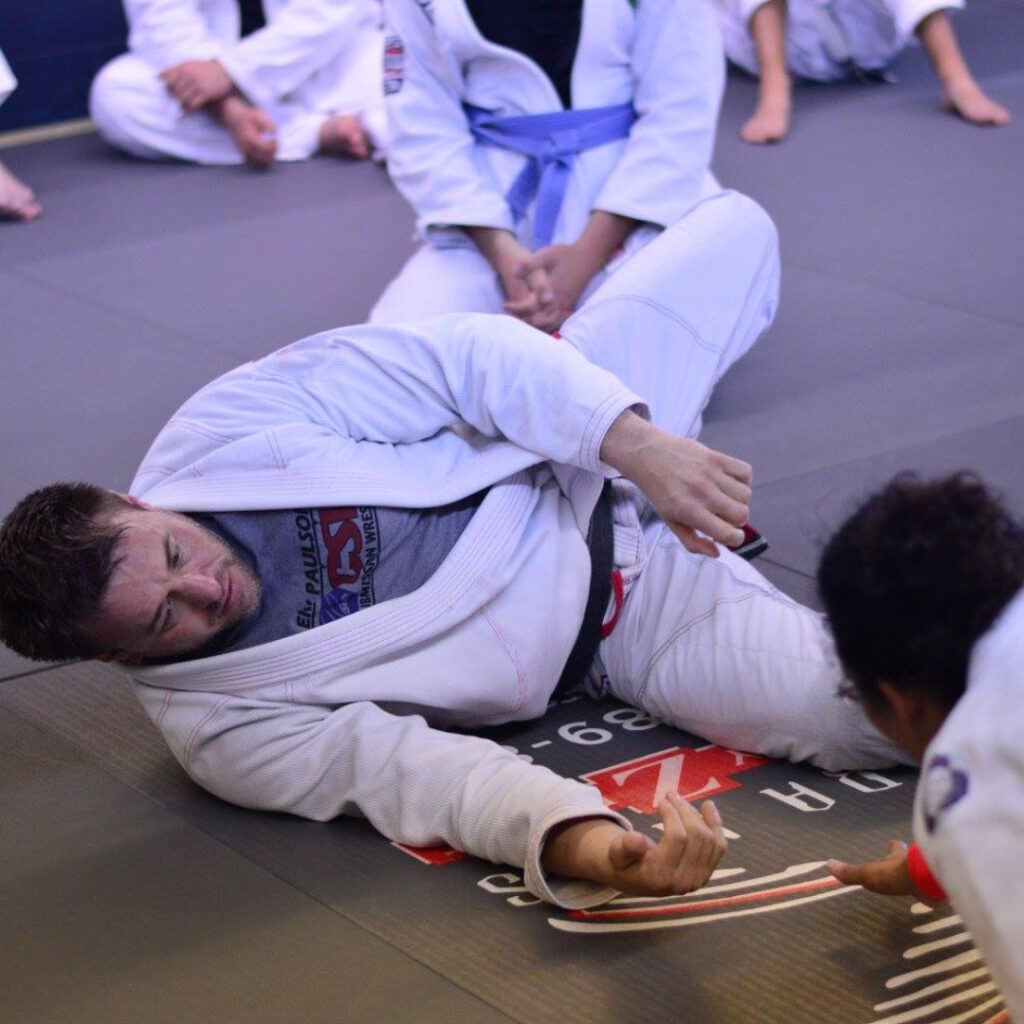
Testing Areas Of Focus
When we start to take a look at students for advancement in rank, we observe four different areas of focus in order to dertine their readiness. Here are those areas of focus:
- Attitude
- Knowledge
- Attendance
- Performance
Attitude
First and foremost, one of the things we take a look at is the students’ attitude. As you know, having a proper perspective can tremendously affect anything human beings focus on. The correct attitude is vital to having an educational mindset, and it is essential for anyone to pursue a significant level of advancement in any area. A proper attitude toward learning is just a portion of what we are looking for. A student must also have a good attitude toward their teammates. It has been said that you can look at those that are immediately around you, and you will be able to determine where you’re going to end up in life. I think this is very true, and if you think about it, if you are very active inside the Academy, you are around your teammates for a tremendous amount of time. With this in mind having a proper attitude and a good level of respect for your teammate is very important in creating an excellent solid environment of growth. Just one lousy attitude or just one bad apple in the barrel can ruin the entire batch, just like it can ruin the whole atmosphere of the Academy. This reasoning is one of the reasons this area is bodily essential to proper growth.
Knowledge
In every martial arts school, there is a list of techniques you will have to learn to advance to your next level. And generally, when you get close to testing, you will be given a list of the fundamental requirements you will have to present during your test. This list is the bare minimum you will need to demonstrate to pass the test. In our organization, there is a test list, and there is also a week-to-week curriculum. The week-to-week curriculum is much more extensive and in-depth than what you see on a test list. The reason for this is we want you to be exposed to more knowledge and information than what you will be tested on. Even though you will be only presenting a small portion of what you will know, a trained instructor will be able to tell that you have far more knowledge and training than what you are demonstrating. With this in mind, the area of knowledge is not just about getting ready to pass that fundamental test list, but instead, it is about the overall bank of information that you can learn and take forward with you. This is what we consider when looking at the student’s overall knowledge.
Attendance
Generally, a student will need a minimal amount of time invested in the Academy before they are eligible to test for the next area of rank. Sometimes this is looked at as a cumulative number, but one other thing to consider is the consistency of training. Yes, you do have to have a certain number of classes or hours invested before you are eligible to take a test. But leadership will also take into consideration your consistency. Consistency is a powerful life skill that can be applied inside the Martial Arts Academy and has powerful merit in real life. Because of this, consistency is also considered in the area of attendance. Additionally, some students will invest extra hours of training outside of class. This additional investment of time is also considered when a student is getting close to raking. With that in mind, investing that extra time can also influence advancement.
Performance
Finally, your performance when demonstrating technique as well as when you are applying the information in live rolling Will also be taken into consideration. A seasoned instructor will be able to watch two people demonstrate the same technique, and they will be able to determine who has more skill and knowledge just by the way they will move their bodies as they demonstrate what they are doing. Your level of skill will be presented in all of your physical demonstrations in class as well as in a test. With that said, it is more than just knowing a list of techniques. With this in mind, take the time to invest the additional time and effort into polishing those basic techniques as well as spending the time developing your ability to apply them inside of a resisting environment.

